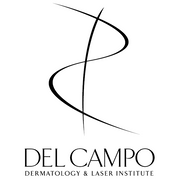
Estimated to affect about half of adults, skin tags are common dermatological issues. Technically known as acrochordons, skin tags are harmless, small growths of hanging skin that may or may not be attached by a thin stem. While they can sometimes resemble warts, they tend to be smooth and misshapen. Since they’re not contagious, they typically appear individually instead of in clusters. To shed more light on how they occur and when you might need to talk to a dermatologist about the problem, check out the following quick guide.
How Are Skin Tags Different Than Moles?
Skin tags are typically the same color as your surrounding skin and soft to the touch. They tend to appear around the neck, eyelids, armpits, and groin. Hair won’t grow from a tag.
 Compared to tags, moles are flatter, raised growths that usually take on a brown color. Hair may or may not grow through a mole. Similar to sunspots, moles typically develop on areas that are exposed to UV rays.
Compared to tags, moles are flatter, raised growths that usually take on a brown color. Hair may or may not grow through a mole. Similar to sunspots, moles typically develop on areas that are exposed to UV rays.
While tags are benign, moles can sometimes indicate the presence of skin cancer. If you have a growth that is asymmetrical, painful, large, itchy, or uneven in color, have it looked at by a dermatologist for further diagnosis.
What Causes Skin Tags?
Most of these growths develop due to friction, which is often where the skin folds. In this situation, rubbing causes a small gland or bump to form, and as the friction continues, the growth will get larger and pull away from the surface.
Some other possible reasons that skin tags occur include changes in hormone levels, insulin resistance, or the presence of HPV. Anyone can get skin tags, but they appear more often in pregnant women, obese individuals, and people with diabetes.
When Should I Be Concerned?
Although skin tags won’t cause serious complications, it’s a good idea to speak to a dermatologist about treatment options if the growth is bothering you. For instance, you should seek help if the tag is painful, bleeds often, snags, or presents cosmetic concerns.
Often, dermatologists will remove the growth by cutting it off with sterile scissors or freezing it off with liquid nitrogen. In other cases, they may use a laser to cauterize the tissue until it falls off.
If you’re worried about an unusual growth, don’t wait to have the issue diagnosed. Instead, turn to Del Campo Dermatology & Laser Institute in North Miami, FL, for a quick, comfortable, and convenient checkup. As a board-certified dermatologist serving Aventura, Golden Beach, Sunny Isles, and Bal Harbor, Dr. Roberta Del Campo knows how to precisely identify common growths—including skin tags, warts, and moles. Backed by state-of-the-art equipment, Dr. Del Campo will gently remove any growths to restore your appearance. To learn more about these skin treatment services, visit this cosmetic and medical dermatology clinic online. For appointments, call (305) 705-6675.
About the Business
Have a question? Ask the experts!
Send your question

